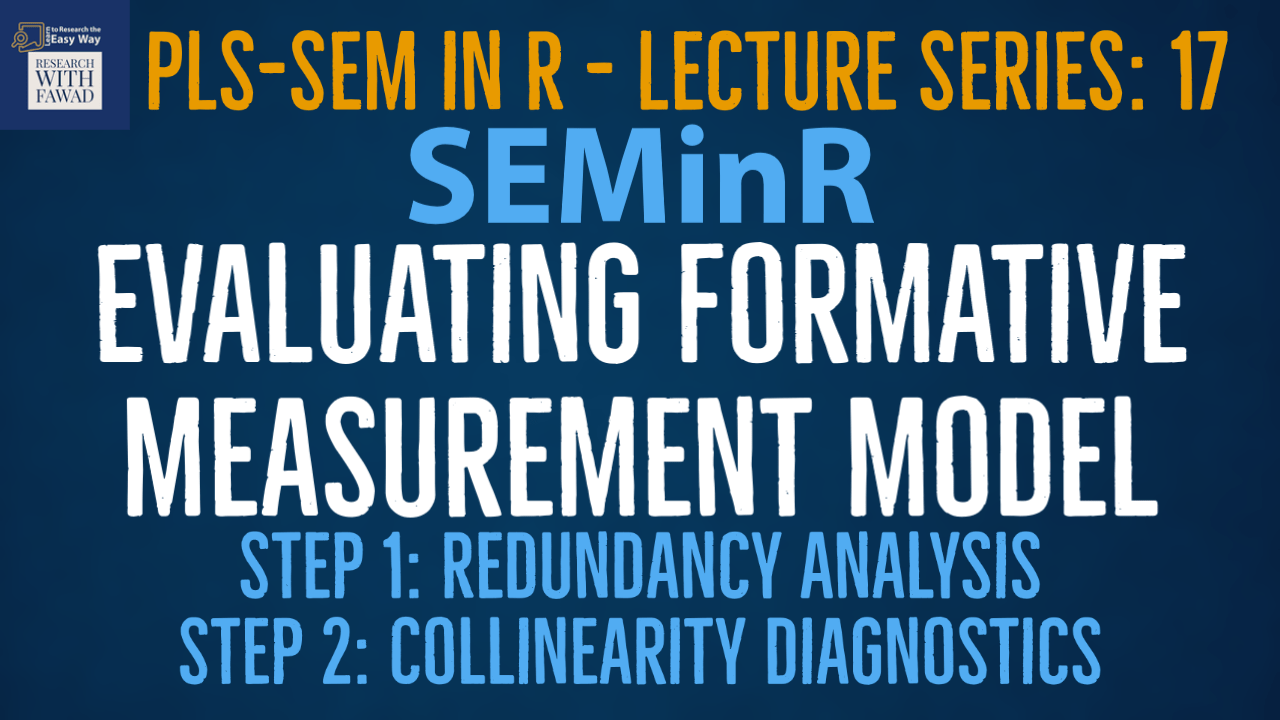
SEMinR Lecture Series
This session is focused on how to perform redundancy analysis and collinearity diagnostics using SEMinR in Cran R.

This session is focused on how to perform redundancy analysis and collinearity diagnostics using SEMinR in Cran R.
Hair Jr, J. F., Hult, G. T. M., Ringle, C. M., Sarstedt, M., Danks, N. P., & Ray, S. (2021). Partial Least Squares Structural Equation Modeling (PLS-SEM) Using R: A Workbook.
The tutorials on SEMinR are based on the mentioned book. The book is open source and available for download under this link.